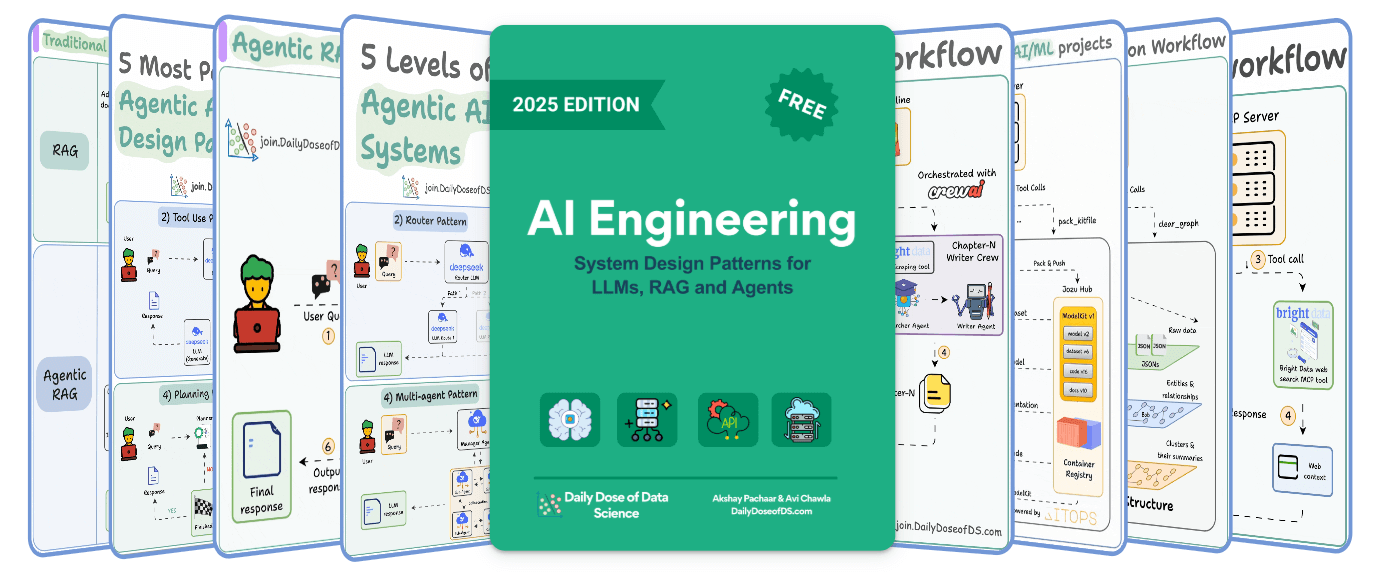

TODAY'S ISSUE
TODAY’S DAILY DOSE OF DATA SCIENCE
5 Agentic AI design patterns explained visually
Agentic behaviors allow LLMs to refine their output by incorporating self-evaluation, planning, and collaboration!
The following visual depicts the 5 most popular design patterns employed in building AI agents.

Let's understand them below!
On a side note, we started a beginner-friendly crash course on RAGs recently with implementations, which covers:
- RAG fundamentals
- RAG evaluation
- RAG optimization
- Multimodal RAG
- Graph RAG
- Multivector retrieval using ColBERT
- RAG over complex real word docs ft. ColPali
1) Reflection pattern
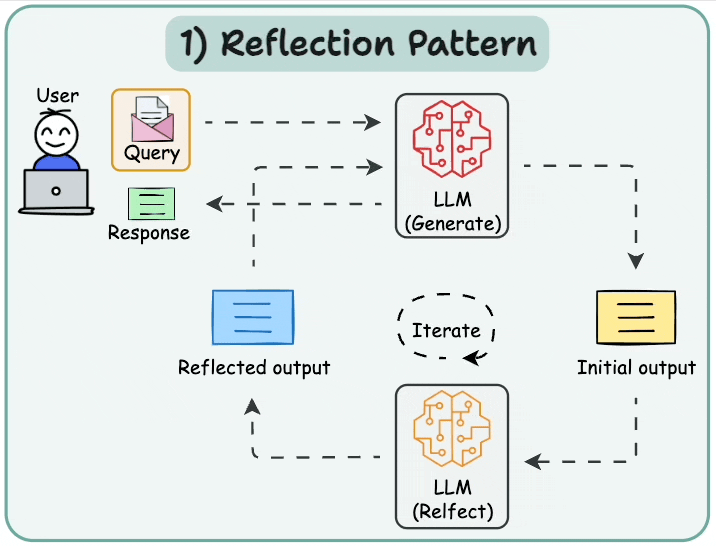
The AI reviews its work to spot mistakes and iterate until it produces the final response.
2) Tool use pattern
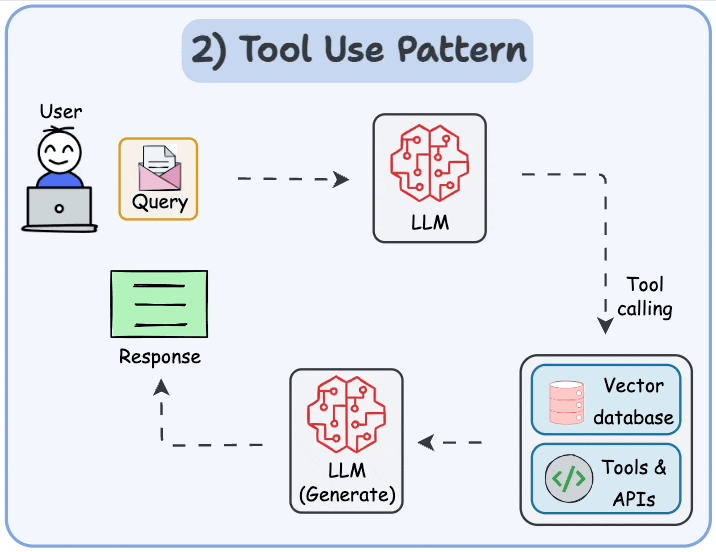
Tools allow LLMs to gather more information by:
- Querying a vector database
- Executing Python scripts
- Invoking APIs, etc.
This is helpful since the LLM is not solely reliant on its internal knowledge.
3) ReAct (Reason and Act) pattern
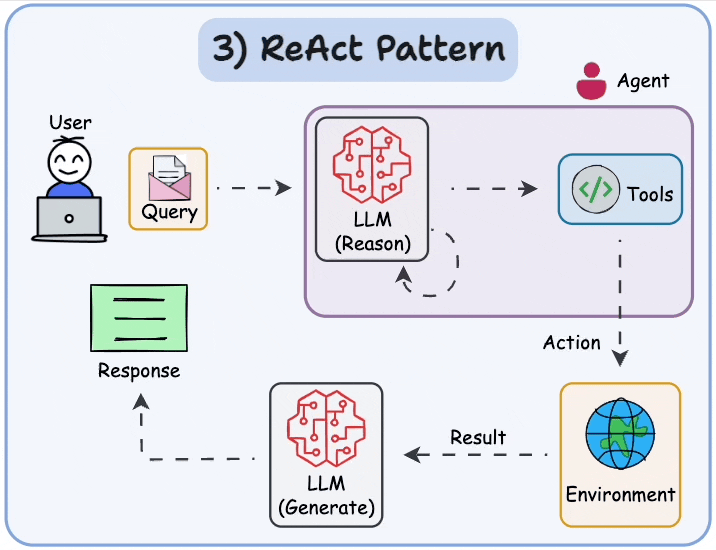
ReAct combines the above two patterns:
- The Agent can reflect on the generated outputs.
- It can interact with the world using tools.
This makes it one of the most powerful patterns used today.
4) Planning pattern
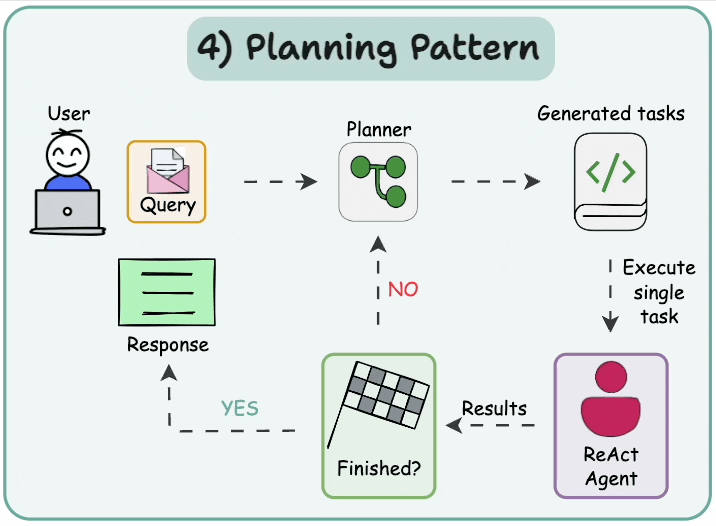
Instead of solving a request in one go, the AI creates a roadmap by:
- Subdividing tasks
- Outlining objectives
This strategic thinking can solve tasks more effectively.
5) Multi-agent pattern

In this setup:
- We have several agents.
- Each Agent is assigned a dedicated role and task.
- Each Agent can also access tools.
All agents work together to deliver the final outcome while delegating tasks to other agents if needed.
We'll soon dive deep into each of these patterns, showcasing real-world use cases and code implementations.
In the meantime, make sure you are fully equipped with everything we have covered so far like:
- RAG fundamentals
- RAG evaluation
- RAG optimization
- Multimodal RAG
- Graph RAG
- Multivector retrieval using ColBERT
- RAG over complex real word docs ft. ColPali
Thanks for reading!
THAT'S A WRAP
No-Fluff Industry ML resources to
Succeed in DS/ML roles

At the end of the day, all businesses care about impact. That’s it!
- Can you reduce costs?
- Drive revenue?
- Can you scale ML models?
- Predict trends before they happen?
We have discussed several other topics (with implementations) in the past that align with such topics.
Here are some of them:
- Learn sophisticated graph architectures and how to train them on graph data in this crash course.
- So many real-world NLP systems rely on pairwise context scoring. Learn scalable approaches here.
- Run large models on small devices using Quantization techniques.
- Learn how to generate prediction intervals or sets with strong statistical guarantees for increasing trust using Conformal Predictions.
- Learn how to identify causal relationships and answer business questions using causal inference in this crash course.
- Learn how to scale and implement ML model training in this practical guide.
- Learn 5 techniques with implementation to reliably test ML models in production.
- Learn how to build and implement privacy-first ML systems using Federated Learning.
- Learn 6 techniques with implementation to compress ML models.
All these resources will help you cultivate key skills that businesses and companies care about the most.
SPONSOR US
Advertise to 900k+ data professionals
Our newsletter puts your products and services directly in front of an audience that matters — thousands of leaders, senior data scientists, machine learning engineers, data analysts, etc., around the world.






